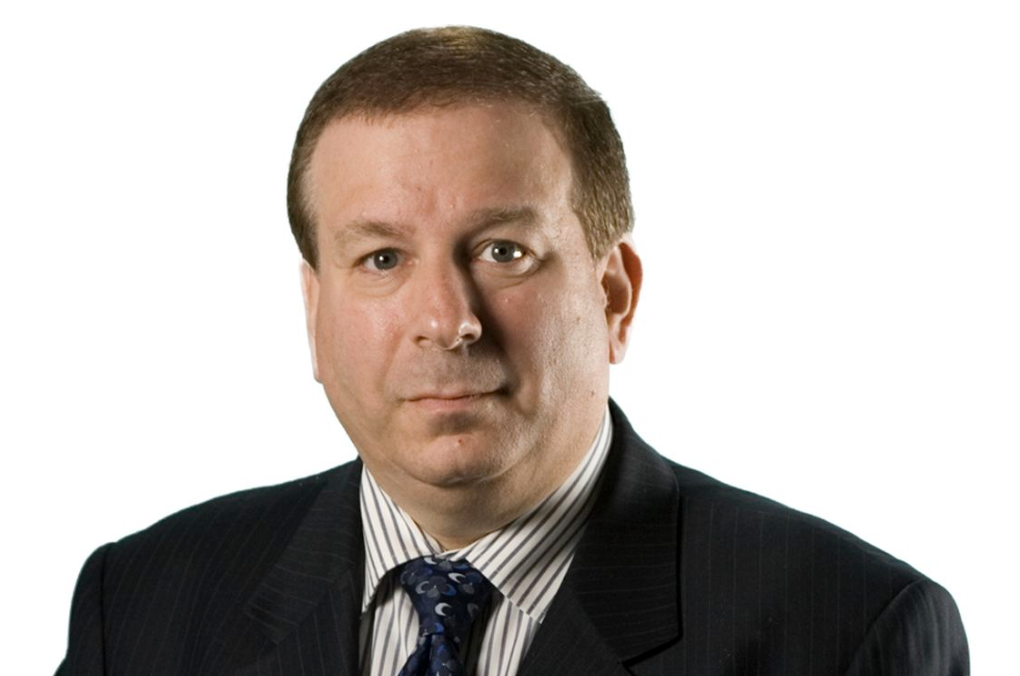-
-
-
-
-
-
What's Coming Next
-
-
-
David Rosenberg: Fed Will Embrace 'Helicopter Money' In The Next Few Years
Honest talk by David Rosenberg on what is coming...
Zero Hedge's write up on the interview
Jerome Powell has denounced MMT has "just wrong", but many Wall Street luminaries have surprisingly communicated an openness to the proposal. Most recently Ray Dalio proposed a marriage of monetary and fiscal policy that sounded suspiciously similar to MMT. Bill Gross, once a vocal critic of the Federal Reserve's stimulus program, told Bloomberg shortly after he retired from managing outside money that higher taxes and the advent of MMT might be 'necessary evils' to combat the widening economic gap between the rich and the poor.
MMT has been perhaps the most widely discussed topic in the realm of economics since Alexandria Ocasio-Cortez proposed it as a possible mechanism for financing her 'revolutionary' Green New Deal. But this past week, President Trump's exhortation that the Federal Reserve usher in QE4 by cutting interest rates stoked a frenzy of speculation that the world's most powerful central bank might be closer to outright debt monetization - aka 'helicopter money' - than mainstream economists had realized. Of course, debt monetization is a central plank of the MMT program.
But just days before Trump made his now-infamous QE4 comment, Gluskin Sheff chief economist David Rosenberg offered a prediction during an interview with MacroVoice's Erik Townsend that, in retrospect, seems surprisingly prescient.
David Rosenberg
During a discussion about how the Fed 'pause' impacted Sheff's monetary policy outlook, Rosenberg, a frequent guest on CNBC, declared that, instead of giving QE another try, the central bank would opt for something even more radical by embracing MMT. And not without good reason. Just because the Fed is ostensibly insulated from political considerations, doesn't mean it's not obligated to protect its credibility. And after a decade where its monetary policy did almost nothing to improve the circumstances of working Americans - but instead aggravated the economic inequality that helped bring about the rise of populism, which culminated in President Trump's stunning electoral triumph - the central bank's stimulus efforts will inevitably involve a more populist orientation.
Erik: Let’s talk a little bit more about the Fed’s ability to fight back against the next downturn. And particularly with respect to MMT. Because I agree with you, the Fed is going to take the funds rate to zero. That’s kind of their first play. What I kind of see on the horizon is I think that if they try to propose another round of QE that looks like the last several, I think the political left is going to say "no way."
There’s going to be a huge revolt and people are going to say, look, if you’re going to create money out of thin air, it needs to be helicopter money. Give it to the people, not to Wall Street. And it seems to me – I certainly understand their point, I understand why people are frustrated with those bailouts – but that’s a whole different animal. QE that is to fund helicopter money is a completely different equation than the last few cycles.
[...]
David: No, I think actually you’re 100% on the money with that observation. You know, QE1 addressed a market failure in mortgages that even the most ardent libertarian would have supported back in 2009. The ensuing quantitative easings and incursions by the Bernanke Fed were all aimed at promoting a stronger stock market.
And, actually, what was incredible was then the day after QE2, which nobody really saw coming, the day after, Ben Bernanke actually had an editorial of his printed in the Washington Post, pretty well telling everybody we were doing this to generate a positive equity vol-effect on spending. And, while we didn’t get a whole lot of spending, we got a lot of equity market wealth. And of course it just provided added distortions. Because, not only do we have record income inequality, but this created a situation of also record wealth inequality. With no evident impacts that it had any significant multiplier impacts on overall economic growth. Although I’m sure the proponents, including Mr. Bernanke himself, would probably suggest otherwise.
Historically, when the US has entered a recession, the Fed has had to cut interest rates by 500 basis points to help steer the economy back to growth. With that in mind, Rosenstein continues with a few observations about how most people underestimated how aggressive the last round of stimulus truly was.
The first of that, historically, when you go into a recession – and this is on average, so on a very tight standard deviation – the Fed historically, to fight a recession, cuts the funds rate 500 basis points. Well, they’re peaking out at 2.5. There’s no 500 basis points this time for the Fed to play with. At least the last cycle, the funds rate peaked at 5.25.
The Fed went to zero. This time around, the starting point is going to be 2.5. Historically, you’ve got to cut the funds rate by 5 percentage points. And what happened in the last cycle – that is going to serve at least as some sort of template – is that when the Fed realized the extent of the deflationary detonation that was happening in the credit markets and in the housing markets, that they had to cut the funds rate by 700 basis points, not 500. And so that’s really what they did with QE was to create a synthetically negative interest rate.
[...]
Now, when push came to shove and you look at what’s called the shadow Fed funds rate (and you can see this on the St. Louis Fed website), de facto, with the balance sheet effect, the funds rate actually went to minus 5% this cycle. People don’t realize how aggressive the Fed got. They ultimately cut the funds rate, when you include the expansion sheet, by 1,000 basis points – 10 percentage points. They went much further than you could ever have imagined. And so that’s what they did with quantitative easing.
Bottom line: Whatever the Fed might add to its balance sheet in the next round of stimulus, if history is any guide, it likely won't have much of an impact. Which is why Rosenstein 'firmly expects' the central bank to engage in outright monetization "in the next couple of years." Even before MMT started gaining all of this political momentum, the Fed and Ben Bernanke had been dropping a trail of breadcrumbs to lead us to the idea that outright monetization wasn't out of the realm of possibility. Rosenstein points to remarks Bernanke made back in 2003 to the Bank of Japan where he recommended that the central bank try a "monetary financed tax cut" to try and shake the Japanese economy out of its growth malaise.
If you accept the argument that the Fed has already done "90%" of this "Bernanke Playbook", then the notion that it might embrace all-out monetization isn't that far-fetched. And there aren't many obstacles standing in the way of this collaboration between the Treasury and the Fed: It wouldn't require changing the tax system or passing any new laws. The Treasury would simply need to issue a 100-year perpetual bond, hand it to the Fed, and collect its $5 trillion coin.
But the point here is that what happens with debt monetization, or however you want to call it, or helicopter money, is the Treasury puts – call it a perpetual, could be a 5-trillion-dollar coin, a 100-year bond, on the balance sheet of the Fed. And the Fed prints that money and then hands it over to the Treasury to do with it what you would like. And you don’t have to change the tax system. You don’t have to change any laws and have it held up in the House or the Senate. And there’s a whole bunch of things you could do with that money to try and stimulate aggregate demand. And then we’ll create a whole new inflationary experience and then we’ll be worried at some point about inflation and we’ll deal with it then. But this is the last page of the Bernanke playbook. And, if you buy the premise that you’ve already done 90% in the past number of years of what Bernanke was already talking about at this point 17 years ago, I think that’s where we’re going to be heading.
Of course, there are other alternatives available to the Fed: It could try negative interest rates - though they haven't done much to stoke in
inflation and growth in Europe. But one thing is for sure: During the coming downturn, the central bank is going to need to get a lot more 'creative'.


